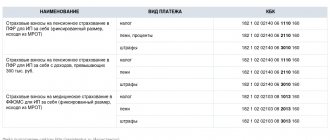No state in the world can function without a treasury. Its replenishment comes from various sources. One of them is the income tax of legal entities and individuals. The Russian Federation is no exception, where taxes make up the bulk of the budget. In their structure, the tax on bank deposits of individuals occupies a modest last place.
Is profit from deposits of individuals taxed?
Many depositors are not even aware of the existence of a tax on deposits of individuals, and if they do know, they take it literally, as it sounds. However, the Tax Code of the Russian Federation contains completely different formulations. To understand what the taxation of deposits of individuals is in 2020, it is necessary to clarify the concepts and definitions used in the Tax Code of the Russian Federation and in the formulations used in everyday life and in information materials devoted to the taxation of deposits of individuals:
- bank deposit;
- deposit;
- income;
- profit.
1. Bank deposit is a sum of money transferred by an individual to a financial organization in order to earn a profit in the form of interest. The bank, in turn, issues these funds to third parties, citizens or organizations, as loans, also at interest. For example, the deposit was made at 9.8% per annum. A loan for the deposit amount was issued at 12.3%. Of this, the depositor will receive 9.8%, and 2.5% will remain for the bank as profit (12.3%-9.8%).
2. A deposit is also a bank deposit, but in a broader sense. This:
- cash deposit in various currencies;
- securities (shares, bonds, certificates, etc.);
- precious metals: platinum, gold, silver, as well as coins.
Such clarification is necessary due to the fact that there is a different system for calculating tax payments for deposits in precious metals.
3. Income is the totality of funds received by a legal or private entity as a result of any activity over a certain period of time. In world practice, income is most often taxed in only three cases:
- wages - income tax;
- inheritance;
- sale of real estate (house, cottage, apartment, etc.).
4. Profit is the difference between income and the costs of obtaining it. If we have an excess of costs over income, then we receive losses. In the case of deposits, profit comes from interest on ruble or foreign currency deposits.
Based on the above definitions, it can be argued that the concepts of “deposit tax” and “deposit tax” are just a tax on interest on deposits of individuals, because they, in essence, are the profit of its holder.
An example of calculating tax on interest on deposits of individuals
Let's consider an example that clearly demonstrates the taxation process in the Russian Federation.
Let's say that three people decide to place their savings in three different banks. All of them are citizens of the Russian Federation.
- The first investor opened a deposit of five hundred thousand rubles for a period of one year. The interest rate is 12% per annum. Interest is paid at the end of the term.
- The second investor invested eight hundred thousand rubles at 14.25% per annum. The contract period is six months. Interest is also paid at the end of the term.
- The third investor decided to open a foreign currency deposit and invested twenty thousand US dollars, his interest rate was 9.2% per annum. The term is one year. Interest is paid at the end of the term.
The benefit provided by the state is plus five percentage points to the refinancing rate, which, in turn, is equal to 7.5%. In other words, only those ruble incomes at a rate of twelve and a half percent or higher will be subject to duty.
Consequently, the income of the first investor will not be taxed. The second and third depositors will pay tax on deposits of individuals.
If the tax rate is thirty-five percent, then the tax base will be equal to:
- For the second investor: 800,000 * 1.75 * 182 / 365 *100 = 6,981 rubles.
- For the third investor: 20,000 * 0.2 * 365 / 365 * 100 = 40 dollars.
The payment will be:
- For the second depositor: 6,981 * 35% = 2,443.35 rubles.
- For the third investor: 40 * 35% * 71 = 994 rubles.
Important
: for the third depositor, the calculation was made in rubles, since taxation is carried out in national currency at the Central Bank exchange rate on the date of calculation.
All the examples described represent a simple scheme for calculating the amount of duty to be paid. Interest on them was paid without capitalization and at the end of the term. In practice, you may encounter more complex situations.
For example, cases where interest payments occur every month (or every quarter). Withholding of personal income tax will also be carried out monthly (quarterly).
An even more complex option involves the use of compound interest, as well as the possibility of replenishing the deposit. This leads to:
- The tax base and, as a consequence, the amount of personal income tax are constantly changing, as the amount of the deposit increases.
- The rate may change. This occurs when the agreement provides for a gradation of rates depending on the amount in the account. In other words, if at the time of signing the agreement the current rate did not exceed the refinancing rate increased by five percentage points, no tax is charged to the individual. But if an individual replenished his deposit and interest accumulated on it, the rate increased, and at some point exceeded the limit. Accordingly, from this moment, the taxpayer’s income is subject to taxation.
It should be noted that an individual is not required to file a tax return. The bank independently calculates and withholds all necessary amounts.
If the bank deposit agreement is terminated early, the rate is recalculated at lower rates. As a rule, the rate for demand deposits is used for this, and it is rarely higher than one percent. Consequently, the income of an individual is not subject to tax in this case. In order for the taxpayer to be able to return the personal income tax paid before the termination of the contract, he must submit a written application to the tax office.
In addition, when calculating personal income tax on deposits using the percentage approach, changes in the Central Bank refinancing rate must be taken into account. This point is valid for both decreasing and increasing the rate. Payment collection (or cessation of collection) begins on the day the refinancing rate changed.
A separate case is deposits in precious metals. All income is subject to taxation, and the rate is fixed at 13%.
Summarizing all of the above, it is worth noting that depositors should not be afraid of taxation of deposits, and even more so should not refuse deposits with a high interest rate. You just need to carefully study the tax on individual deposits. 2020 in Russia was marked by a significant decrease in interest rates in banks compared to previous years. However, investors can safely use programs with maximum profitability.
We should not forget that all deposits of individuals in the amount of up to 1.4 million rubles in our country are insured.
Deposit tax rate
In accordance with Art. 225 of the Tax Code of the Russian Federation, taxation of deposits of individuals is carried out at the following rates:
- 35% - for residents of the Russian Federation;
- 30% - for non-residents of the state.
For owners of deposits with precious metals, regardless of their status, tax on income on deposits is charged on the entire amount of profit in the amount of 13%.
For reference:
- resident is a company, organization, enterprise or individual registered in a country and fully complying with its legislation;
- non-resident - citizens or legal entities working in a particular state on a permanent or temporary basis, but registered or residing in another country and subject to its laws.
Important: citizens of the Russian Federation who are outside the country for work (civil servants, military), for treatment, training, etc. more than six months (allowed intermittently), with documents confirming departure, are considered non-residents and are taxed at a rate of 30%.
A differentiated approach to tax rates on income from deposits is dictated by the desire of the legislator to attract foreign currency deposits to the country.
What percentage of the deposit is the tax payment calculated on?
On what deposit amount is the tax payment due? Tax is paid on interest on deposits. The following are accepted as the basis for taxation:
- for deposits in rubles - an excess of the key rate (since 2014 it has been equal to the refinancing rate) by 5 points, i.e. on interest on deposits exceeding the refinancing rate and an additional 5% tax must be paid;
- for deposits in foreign currency - exceeding the minimum threshold by 9%;
- for a deposit in precious metals - the entire amount of profit, i.e. all income from a bank deposit is taxable, and not just the excess of the key rate by a certain amount, as with cash deposits.
The refinancing rate is a dynamic financial instrument for regulating the country's economy. Depends on the inflation rate. Determines the interest rate on loans from the Central Bank of the country for state and commercial banks operating in the territory of the state.
For reference: at the beginning of 2020, the interest rate on deposits of up to 12.5% (7.5% refinancing rate + 5%) is tax-free. Anything more than this figure is subject to tax.
As can be seen from the Tax Code of the Russian Federation, the presence or absence of a tax levy on interest on deposits is determined by:
- the amount of the annual deposit rate established by the bank when concluding the deposit agreement;
- the size of the key rate.
Do not affect the amount of payment and its presence or absence:
- Deposit amount. Regardless of 100 rub. on the account or 10.0 million, tax is calculated on the amount of profit received from exceeding the interest rate. Even if it ultimately turns out that 1 kopeck is due, the tax must be paid.
- The period of storage of funds in the bank - whether the money is deposited for a month or a year - a tax fee will be charged if there are grounds for it;
- The presence in the contract of a clause on its extension;
- Multiple operations on a deposit account, including both replenishment of funds and their withdrawal;
- Whether income from deposits is capitalized or not.
Which deposits are subject to tax?
The types of deposits subject to taxation are defined in Article 214 of the Tax Code of the Russian Federation. It also contains the conditions according to which the tax rate on deposits of individuals is determined.
This year, income from bank deposits is taxed provided that the rate on them is:
- exceeds the refinancing rate established by the Central Bank by 5 points or more (for ruble deposits);
- more than nine percent (for foreign currency deposits).
As you know, the refinancing rate does not have a fixed value. Its value depends on the level of inflation in the country.
Starting from 2020, the value of the refinancing rate is equal to the key value. In 2020 its size is 7.5%.
Consequently, the income of individuals on deposits with a rate of up to 12.5% is not subject to taxation. This is exactly the size we will get by adding the key rate (7.5%) and five points. Tax on deposits of individuals is levied on all other income.
Tax is imposed on that part of the profit that exceeds the preferential amount. For the correct calculation of the tax amount, only the nominal rate on existing deposits matters. It is stipulated in the agreement concluded between the bank and the individual.
In fact, the amount of interest received may be higher, but this does not entail the collection of taxes on this type of income.
A change in the refinancing rate during the validity period of the deposit is not of fundamental importance for investments for a period of up to three years. Based on the provisions of the Tax Code of the Russian Federation, only the value of the rate that was in effect at the time of conclusion of the contract or its extension is taken into account.
Thus, we can conclude that the presence or absence of income tax on individual deposits depends on two parameters:
- the size of the annual deposit rate, which was established by the bank when concluding the deposit agreement;
- key rate size.
The payment amount does not depend on:
- contribution amount. This is due to the fact that the payment is calculated based on the amount of profit that was received from exceeding the interest rate. Moreover, if after all the necessary calculations it turns out that the payment amount is one kopeck, it must still be paid without fail;
- deposit term;
- contract extension;
- the number of transactions carried out on the deposit. Here we are talking about replenishing an account or withdrawing funds;
- capitalization of income on deposits.
Tax payment mechanism
The taxpayer is the owner of a bank deposit or deposit with precious metals. However, to simplify all procedures, when withdrawing funds from a deposit or terminating the contract, the state obliged banks to calculate the amount of tax and transfer it to the budget.
In this case, the financial organization, i.e., in this case, the bank, is responsible for all errors made in calculating and transferring the tax payment. If it later turns out that a tax levy has not been charged on a specific deposit, the bank will pay it from its own funds, as well as fines and penalties.
Thus, the investor does not need to visit the tax authorities and fill out a declaration. The debtor, the bank, does this for him.
Tax payment procedure
Based on Part 4 of Article 214.2 of the Tax Code (which will come into force on January 1, 2021), banks are required to provide the tax authorities with information on how much money they paid as interest, that is, income, to those persons who have Such banks have opened deposits worth more than 1 million rubles. Such information must be provided to the tax authorities by February 1 of the year following the year of receipt of income (that is, for interest received by depositors in 2021, banks must provide information by February 1, 2022).
Based on information received from financial organizations, tax authorities will calculate the amounts of taxes that must subsequently be paid by investors on the basis of special tax notices.
As mentioned above, the information contained in the declaration will be considered only as additional reference for mutual verification of banks and taxpayers.
How is tax calculated?
The tax on ruble deposits is calculated using the formula:
S=P*t/100 , where
- S—amount of tax payment;
- P - taxable profit;
- t — tax rate (30% for non-residents, 35% for residents).
In turn, the amount of profit subject to tax is calculated as:
P=W*(NK-5)/100/365*n , where
- W is the amount of savings placed in the deposit account;
- N—annual interest rate;
- K - refinancing rate;
- n is the deposit storage time, in days.
Let's look at a specific example. Initial data:
- deposit amount - 500,000 rubles;
- the contract was executed on March 1 for 3 months (92 days);
- annual deposit rate - 13.5%;
- refinancing rate - 8.4%;
- On April 1, the refinancing rate was reduced to 7.9%;
- the contribution was made by a resident of the Russian Federation.
We substitute specific numbers into the given formula:
P=500000x(13.5-7.9-5)/365/100x61=489.22
For reference: the number of days of keeping savings in an account (61) with a higher interest rate on the deposit is determined from the date of reduction in the refinancing rate (92 days - 31 days).
Thus, tax will have to be paid on the amount of 489 rubles. 22 kopecks The specific payment amount is 171 rubles. 23 kopecks (489.22*35/100).
For foreign currency deposits, the tax amount is calculated using the formula:
S=W*(N-9)/100/365*n*t/100 , where
- S is the amount of tax;
- W is the amount of savings placed in the deposit account;
- N—deposit rate;
- n — deposit storage time, in days;
- t — tax rate (30% for non-residents, 35% for residents).
Let's give an example of calculation using a specific example:
- deposit amount - $5000;
- annual rate - 9.5%;
- shelf life - 90 days;
- the investor is a resident of the Russian Federation.
The depositor will need to pay $0.04 (3000*(9.5-9.0)/365/100*90*13/100).
The tax on deposits with precious metals is calculated using the formula:
S=W*N/100/365*n*13/100 , where
- S is the amount of tax;
- W is the amount of savings placed in the deposit account;
- N is the annual interest rate on the deposit;
- n—storage time, in days.
How to calculate
At the beginning of 2020, the key refinancing rate is 9.75% of annual indicators, while back in 2020 this value was slightly higher - for the period from 01/01/16. – 11%, from 06/14/16. – 10.5% and from 09.19.16 – 10%.
Today the rate is 9.75%, which serves as the basis for calculating income tax on deposit accounts.
In each individual case, the special financial department of a particular bank directly calculates taxes on income from deposits.
In Russia, banking institutions do not practice setting too high rates for capitalization and profitability of deposits.
The maximum figures compiled by statisticians and analysts range from 11% to 11.5% as of March 2020.
And in order to begin to withdraw tax from deposit income, it is necessary that interest on deposits be at least within the range of 14.75% on a ruble account, which the bank deposit market will not allow.
The conclusion suggests itself - in most cases, there is simply no need to pay deposit tax on ruble accounts.
This is only possible if the bank also offers capitalization interest on deposit interest, which in total gives a nominal rate that can approach the threshold for paying taxes.
The client must pay such a tax on his income received from the deposit, but in practice, the bank itself will do this for him automatically. The amount of tax to be transferred to the state budget is calculated by the bank itself.
All reports on such calculations can be requested by the depositor for study and verification at any time - the bank freely provides such information to the owner of the deposit funds.
The procedure for transferring tax amounts to the structure of the tax authority at the location of the bank is also carried out by the financial organization itself, and not by its client.
In exceptional circumstances, a refund of the tax amount, its recalculation at other rates and other exceptions are possible.





